
The voices of history gather and the appeal of history is imaginative. Imagination craves to behold the past. Consider all that is implicit in that single word 'past', the more so when its wings are folded around such an historic cavalcade of names as the amateurs of the Wanderers, Old Etonians, Royal Engineers and Oxford University, to be succeeded at the birth of professionalism by the likes of Blackburn Rovers, Aston Villa, Preston North End, Newcastle United, Manchester United, Tottenham Hotspur and the rest. Now we stand in the purple dignity of their collective shadow and, applauding, turn back to that past so that we may 'roam' in a crowded mist and hear lost voices and see lost looks'.
The Football Association 'Challenge Cup'. That is its proud title, but to the world it is known simply as 'The Cup'. How profound has been its influence on the world game.
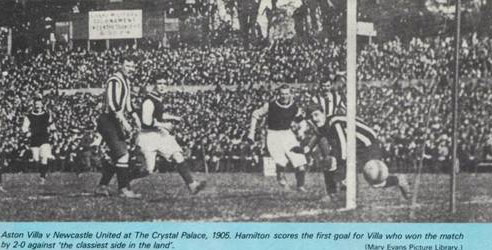
There is a charm about this great competition since it is the most democratic of contests. The giants cannot disport themselves in their own world; they must be ready to face the dwarfs of lower spheres if they wish to become the FA Cup winners and very often they fall with a resounding crash. This is the intriguing David and Goliath character of the competition, here lies its fascination. It was C. W. Alcock, Secretary of the F.A. from 1870 to 1895 who launched the idea of the Cup. Educated at Harrow School, he had taken part there in the Cock House Competition, a system of House matches based on the knock-out principle. The F.A. Cup, indeed, was the adaptation on a national scale of school days so that in October 1871 fifteen teams formed an initial entry. History took a deep breath and prepared for the plunge.
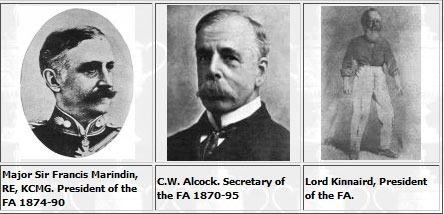
1871: it is mid-Victorian England - the age of Gladstone and Disraeli, which saw the beginnings of social and industrial reform; the age of the horse and carriage; of the top-hat and cloth cap; of extravagant beards and mutton chop whiskers; of Dickens; which brought the curtailment of long working hours and, importantly, the unique social creation, the Saturday half-holiday. It was this that did as much as anything to help popularise football with the community.
The magic of the Cup, too - soon affectionately known as 'the little tin idol' - spread rapidly. By 1882, a mere decade after its start, the entries had grown from 15 to 84; by 1885, when professionalism was legalised, 130 clubs set out in search of the prize. The oak tree had begun to take shape from the acorn. The Cup Final has had three historic homes. First, it was the Kennington Oval from 1872 to 1892, with the exception of its second year. Since, initially, as spartacus-educational.com outlines in their cup history article, it was meant to be a challenge cup the winners of the previous season was exempt until the final with a choice of ground. The Wanderers, as holders, in 1873 chose Lillie Bridge for the climax, a site now occupied by railway sidings at West Brompton near to Stamford Bridge. After that year, however, the challenge round was abandoned and the holders, rightly, had to take their chance against the whole field.
In 1893 the scene changed to The Crystal Palace where, apart from five replays at the turn of the century, it stayed until 1914. After the first World War there followed three brief visits to Chelsea's Stamford Bridge before the remarkable birth of Wembley in 1923. And there it stayed until 2000 but with a difference. The whole rim of this world famous stadium, with its lush Cumberland turf, was enclosed with a roof as protection against the elements: once, at the start, the final was no all ticket affair which led to the initial 1923 invasion by a multitude estimated at 200,000 covering the pitch itself like a swarm of insects and holding up the kick-off for three quarters of an hour while His Majesty King George V stood patiently watching the remarkable scene from the royal box. Once upon a time, too, the teams used to emerge into the arena from the west end of the stadium, now they enter from the east underneath the giant electric scoreboard. Life moves on.
It may be of some interest to record that in 1876 the Druids became the first Welsh side to enter the Cup, an event which brought a distant echo in 1927 when Cardiff City became the first and only side ever to take the trophy out of England. It must be added, also, that during the formative years there came challengers from Scotland in the persons of Queen's Park - the Glasgow amateurs, Third Lanark, Rangers, Heart of Midlothian, Renton, Cowlairs and Partick Thistle, while Ireland sent Cliftonville from Belfast. In 1885, indeed, when Queen's Park, Glasgow, drew with Nottingham Forest at Derby in the semi-final round, the F.A. directed the replay to be held at the Merchiston Castle ground in Edinburgh - the only time a semi-final tie has been played out of England. Nottingham Forest, in fact, alone of all clubs hold the unique distinction of having played F.A. cup-ties in England, Scotland, Wales and Ireland.
The first major turning point of the years came in 1882 when the Old Etonians beat Blackburn Rovers in the final. So delighted at the outcome was the Etonian captain, Hon. A. F. Kinnaird, of the red beard and long white trousers, soon to be an Earl and President of the Football Association, that he jumped for joy and celebrated the victory by standing on his head in front of the Oval Pavilion. But little did he know that was the end of the epoch. It was the last triumph of the true blue amateurs of the south as the curtain fell on a golden age which is perfectly captured in a recent series on netflix.co.uk. The following year the 'little tin idol' went north for the first time when the artisans of Blackburn Olympic beat the Etonian Establishment 1-0.
What a home coming Olympic were given. Cheering crowds and brass bands marked the triumphal route as the team, with Warburton holding the Cup aloft, were driven through the city of Blackburn in a wagonette drawn by six horses. Somebody in the crowd shouted: "isn't that t'Coop? Why, its like a tea kettle"'. Warburton's reply was to the point: "Ey, lad. But it's very welcome to Lancashire. It'll ne'er go back to Lunnon".
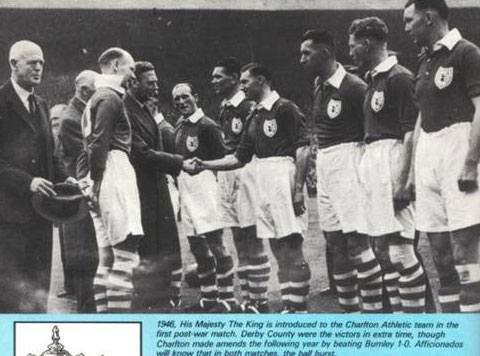
Nor did it. On the night of September 11, 1895, the 'little tin idol' ceased to exist. Won by Aston Villa that season, it was stolen while on display in the shop window of William Shillcock, football and football boot manufacturer, of Newton Row, Birmingham. it was never found. The F.A. replaced it with an exact replica and so came into existence the second cup. However, the trophy to be seen gleaming in the Royal Box this afternoon is actually the third in the long history of the competition. Presented in 1911 by the F.A. and more handsome in design than its predecessors, it was the work of Messrs Fattorini and Sons, silversmiths of Bradford. By an odd coincidence the first to win it were Bradford City on the only occasion this Yorkshire town has been involved in a Cup Final. Events move in a mysterious way!
Flicking through the pages of history it can be seen that the nineteenth century drew to a close with the midlands, east and west, showing its power. Here were Wolverhampton Wanderers, Aston Villa (twice), County and Nottingham Forest collecting the prize, with West Bromwich Albion, Wolves again, and Derby County (twice) being runners-up between 1893 and 1899. That Wolves' victory of 1893 was their first success and to mark it there stands to this day in Wolverhampton a memorial.
A speculative builder, purchasing the Dudley Road ground (the home of the club before its move to Molineux), built on the site several rows of houses and called them Fallowfield Terrace. Fallowfield was the stadium of the Manchester Athletic Club where the final was played temporarily, following the refusal of the Surrey County Cricket Club any more to permit football on the Kennington Oval Pitch. Surmounting the gate-posts of each house of that terrace - each one of which is named after a member of that Wolves' team - there stands a replica of the Cup in stone. The birth of the twentieth century brought something fresh. The year 1901 saw Tottenham Hotspur at last bring back the Cup to the south for the first time in 20 years and they did so as members of the Southern League, a unique distinction which is unlikely ever to be equalled again. Beyond that, too, The Crystal Palace ground itself at Sydenham created a world record with a crowd of 110,820. Never before had such an attendance gathered for a match anywhere.
Every available inch of space was filled on the great Notts banks and in the stands. Those less fortunate or more daring, left Mother Earth and took to the fringes of trees nesting in the branches like so many rooks. There was scarcely a solitary soul left in North London and Tottenham itself that day resembled Goldsmith's deserted village.
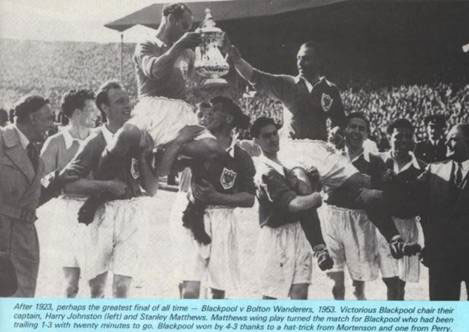
One remarkable milestone on the long and winding road of events was the dramatic experiences of Newcastle United at The Crystal Palace. Between 1905 and 1911 they reached the final five times, plus one semi-final, in seven seasons. During that spell, too, they became League champions on three occasions. The classiest team in the land, the Crystal Palace put a jinx on them. They never lifted the cup there once, though in 1910 they did succeed at last against Barnsley but in a replay at Everton after a 1-1 draw at The Palace. Curiously, however, Wembley itself put the record straight. The scales were balanced when the song of the Blaydon Races swept the trophy to the north-east five times as Newcastle triumphed in 1924, '32, '51, '52 and '55. In 1914 a new mark was made when King George V visited Crystal Palace to become the first reigning monarch to attend the Cup Final. Liverpool played Burnley and as a gesture to the County Palatine the King wore a red rose in his button hole.
A special high water mark came in 1913 when Aston Villa beat Sunderland 1-0. It was their fifth victory in the competition, equalling the record five wins in the nineteenth century of the Wanderers and Blackburn Rovers. Also it was the only occasion so far that the sides standing first and second in the League have contested the final. Sunderland, in fact, won the League so it was a fair division of honours. The crowd, too, provided a new world record of 120,081.
The year 1923 saw the dramatic birth of Wembley. With invading hordes slowly pushed back to form a human Bolton Wanderers beat West Ham United. There might have been a panic, but there was not. The first Wembley final, indeed, came to the very brink of a disaster, only British humour and a merciful providence saving the day. The match itself seemed the least important part of an extravagant afternoon. At the end a fiery Irishman with utter astonishment, remarked: "To fink that not a pistol went off."
Most memorable of any climax so far played at Wembley stand the 'Matthews final' of 1953. That was surely the master's finest hour as Blackpool pulled back in the closing 20 minutes from 1-3 down to win 4-3 in the dying seconds. At the end Matthews was chaired with his captain Harry Johnston - a unique honour and as each held the cup aloft to a cheering populace the sun glinted and danced on the silver baubles.
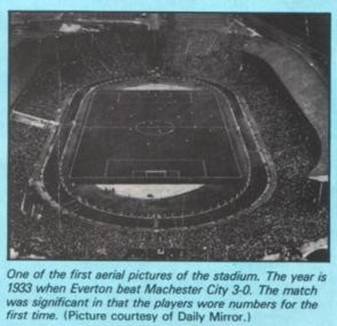
Watching and playing football games is now the chosen past time of many countries both in reality and with football games like Fifa. Today the apotheosis of the British game is the Cup Final, it is a day of carnival when a whole nation is joined as one. This is the golden coin that was thrown into the pond of 1871. A Cup tie fought to the death may be prolonged almost to eternity, but not quite. One of the two must go at last. There must inevitably be tragedy and if this is a truism it is none the less tragic. There may be much known in defeat, but defeat it is and one day in springtime only one winner remains.
There lies it's magic.
Take a look at the Wembley National Stadium for more visuals and information on this fantastic venue where the FA Cup Final is held every year.
Our Thanks to Getty Images
We personally thank Getty Images for allowing us to embed some of their fantastic FA Cup photos into our match reports, they really do help bring back vivid and exciting memories to fans of both teams in each cup final.





